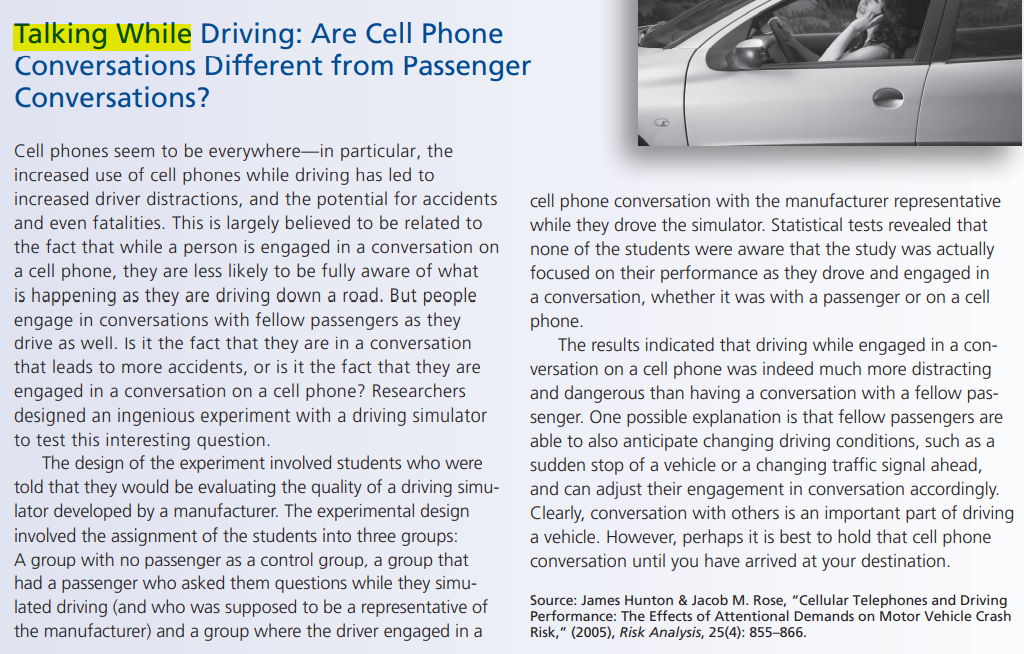
1. What is the design of the experiment? Number of groups,treatment to each group, mode of communication etc.
2. What are the findings of the experiment and explanation ofthe findings?
Talking While Driving: Are Cell Phone Conversations Different from Passenger Conversations? Cell phones seem to be everywhere—in particular, the increased use of cell phones while driving has led to increased driver distractions, and the potential for accidents and even fatalities. This is largely believed to be related to the fact that while a person is engaged in a conversation on a cell phone, they are less likely to be fully aware of what is happening as they are driving down a road. But people engage in conversations with fellow passengers as they drive as well. Is it the fact that they are in a conversation that leads to more accidents, or is it the fact that they are engaged in a conversation on a cell phone? Researchers designed an ingenious experiment with a driving simulator to test this interesting question. The design of experiment volved students who were told that they would be evaluating the quality of a driving simu- lator developed by a manufacturer. The experimental design involved the assignment of the students into three groups: A group with no passenger as a control group, a group that had a passenger who asked them questions while they simu- lated driving (and who was supposed to be a representative of the manufacturer) and a group where the driver engaged in a cell phone conversation with the manufacturer representative while they drove the simulator. Statistical tests revealed that none of the students were aware that the study was actually focused on their performance as they drove and engaged in a conversation, whether it was with a passenger or on a cell phone. The results indicated that driving while engaged in a con- versation on a cell phone was indeed much more distracting and dangerous than having a conversation with a fellow pas- senger. One possible explanation is that fellow passengers are able to also anticipate changing driving conditions, such as a sudden stop of a vehicle or a changing traffic signal ahead, and can adjust their engagement in conversation accordingly. Clearly, conversation with others is an important part of driving a vehicle. However, perhaps it is best to hold that cell phone conversation until you have arrived at your destination. Source: James Hunton & Jacob M. Rose, "Cellular Telephones and Driving Performance: The Effects of Attentional Demands on Motor Vehicle Crash Risk," (2005), Risk Analysis, 25(4): 855-866.
没有找到相关结果